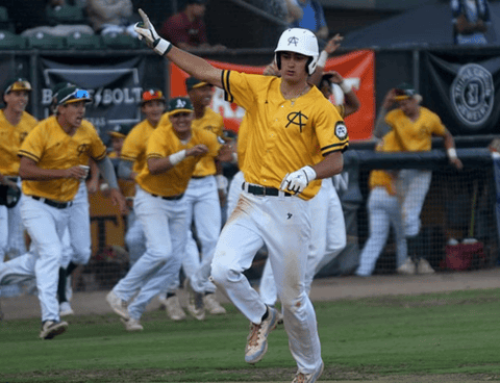Russian Hockey’s Secret Training Weapon
When watching the Russians play hockey, it has been said it looks like they are doing ballet on the ice. And they were! Russian doctors, trainers, and coaches specifically designed ballet for hockey players. However, the world did not know that Russian ballet was one of the secrets to the Soviet player’s extraordinary skills.
Anatoli Tarasov, also known as the “Father of Russian Ice Hockey,” is the coach who integrated the two. He said that hockey players must have the wisdom of a chess player. They must have the accuracy of a sniper. And the rhythm of a musician. Tarasov saw hockey as an athletic artistic expression that required grace, sincerity, and passion, not just a brute’s game.
The societal perception of ballet is often seen as feminine. And took the world by surprise, discovering Russian hockey players were doing it. All I can say is, don’t judge ballet. If you have never seen a performance, watch it.
Observe the performers’ explosiveness, agility, and endurance without prejudice and with an open mind. Look at how the performers spin and jump into the air doing air splits, not once but repetitively, with the same ease, poise, power, and explosiveness. Tarasov saw Russian ballet as such and transferred all of that into hockey.
Elena Segal- Russian Ballet Hockey Trainer
Elena Segal, who studied at Bolshoi Academy, has used ballet to improve the grace,
flexibility, strength, and performance of hockey players and teams like the Anaheim Ducks. When she is teaching ballet, she has a few rules.
One rule was that the movements needed to be performed very slowly. When you can perform them slowly, then you can add speed. Elena emphasized that slow creates a solid base and strong, stable muscles and memory. And it also significantly prevents injuries. She also mentioned that none of her clients suffered injuries from her training.
Another rule Elena mentions is to do ballet with simple steps using classical lines. She says these movements may seem feminine for hockey players. But it is meant to keep every muscle in alignment to generate maximum power when shooting or with stick handling. She describes that you can see it when the player shoots the puck. It is shot with power, precision, and a graceful follow-through connecting the lower body to the upper body.
Elena says many of her clients who are pro athletes complain that ballet is slow, difficult, and not fun. However, the result is graceful fluid movement, enhanced body control, perfect stability, steady balance, upper and lower body coordination, flawless precision, and boosted speed, which all maximize a player’s potential and athleticism.
Russian ballet training focuses on deep, small internal stabilizing muscles to stabilize and align joints. When joints are aligned properly, bones and muscles can move well. And the result of that is flawless and accurate programming for strength, speed, power, and injury prevention.
Elena says three to four lessons are more than enough to finish Level 1 and activate the small muscles. And as for Level 2, it takes about 4-6 sessions to really strengthen those small muscles and stabilizers. Then, she says when those muscles are ready, she starts level 3. This level focuses on speed, strength, endurance, and explosiveness.
Russian Ballet’s Dominance and Power
Russian ballet is more about aesthetics and techniques that guide the performer. On
the other hand, American ballet is seen as exaggerated and associated with a loss of technique and accuracy.
When hockey players start ballet training, they realize how essential the small stabilizing muscles are for the larger muscles to have power, much like spark plugs that make the motor of a car start and function. The larger muscles are not effective without the fine motor control of the small internal stabilizers. So, when you have balance and stability, you optimize your power.
Russian ballet is highly detailed and technical. For example, the Russian hockey team won 22 world championships and 8 Olympic gold medals because of mandatory ballet training. It worked so well that in the 1980s, the NHL started to mimic the Soviets.
So today, not just NHL players but many athletes are learning ballet to boost their sports performance.
RECOMMENDED FOR YOU
MOST POPULAR
Russian Hockey’s Secret Training Weapon
When watching the Russians play hockey, it has been said it looks like they are doing ballet on the ice. And they were! Russian doctors, trainers, and coaches specifically designed ballet for hockey players. However, the world did not know that Russian ballet was one of the secrets to the Soviet player’s extraordinary skills.
Anatoli Tarasov, also known as the “Father of Russian Ice Hockey,” is the coach who integrated the two. He said that hockey players must have the wisdom of a chess player. They must have the accuracy of a sniper. And the rhythm of a musician. Tarasov saw hockey as an athletic artistic expression that required grace, sincerity, and passion, not just a brute’s game.
The societal perception of ballet is often seen as feminine. And took the world by surprise, discovering Russian hockey players were doing it. All I can say is, don’t judge ballet. If you have never seen a performance, watch it.
Observe the performers’ explosiveness, agility, and endurance without prejudice and with an open mind. Look at how the performers spin and jump into the air doing air splits, not once but repetitively, with the same ease, poise, power, and explosiveness. Tarasov saw Russian ballet as such and transferred all of that into hockey.
Elena Segal- Russian Ballet Hockey Trainer
Elena Segal, who studied at Bolshoi Academy, has used ballet to improve the grace,
flexibility, strength, and performance of hockey players and teams like the Anaheim Ducks. When she is teaching ballet, she has a few rules.
One rule was that the movements needed to be performed very slowly. When you can perform them slowly, then you can add speed. Elena emphasized that slow creates a solid base and strong, stable muscles and memory. And it also significantly prevents injuries. She also mentioned that none of her clients suffered injuries from her training.
Another rule Elena mentions is to do ballet with simple steps using classical lines. She says these movements may seem feminine for hockey players. But it is meant to keep every muscle in alignment to generate maximum power when shooting or with stick handling. She describes that you can see it when the player shoots the puck. It is shot with power, precision, and a graceful follow-through connecting the lower body to the upper body.
Elena says many of her clients who are pro athletes complain that ballet is slow, difficult, and not fun. However, the result is graceful fluid movement, enhanced body control, perfect stability, steady balance, upper and lower body coordination, flawless precision, and boosted speed, which all maximize a player’s potential and athleticism.
Russian ballet training focuses on deep, small internal stabilizing muscles to stabilize and align joints. When joints are aligned properly, bones and muscles can move well. And the result of that is flawless and accurate programming for strength, speed, power, and injury prevention.
Elena says three to four lessons are more than enough to finish Level 1 and activate the small muscles. And as for Level 2, it takes about 4-6 sessions to really strengthen those small muscles and stabilizers. Then, she says when those muscles are ready, she starts level 3. This level focuses on speed, strength, endurance, and explosiveness.
Russian Ballet’s Dominance and Power
Russian ballet is more about aesthetics and techniques that guide the performer. On
the other hand, American ballet is seen as exaggerated and associated with a loss of technique and accuracy.
When hockey players start ballet training, they realize how essential the small stabilizing muscles are for the larger muscles to have power, much like spark plugs that make the motor of a car start and function. The larger muscles are not effective without the fine motor control of the small internal stabilizers. So, when you have balance and stability, you optimize your power.
Russian ballet is highly detailed and technical. For example, the Russian hockey team won 22 world championships and 8 Olympic gold medals because of mandatory ballet training. It worked so well that in the 1980s, the NHL started to mimic the Soviets.
So today, not just NHL players but many athletes are learning ballet to boost their sports performance.










